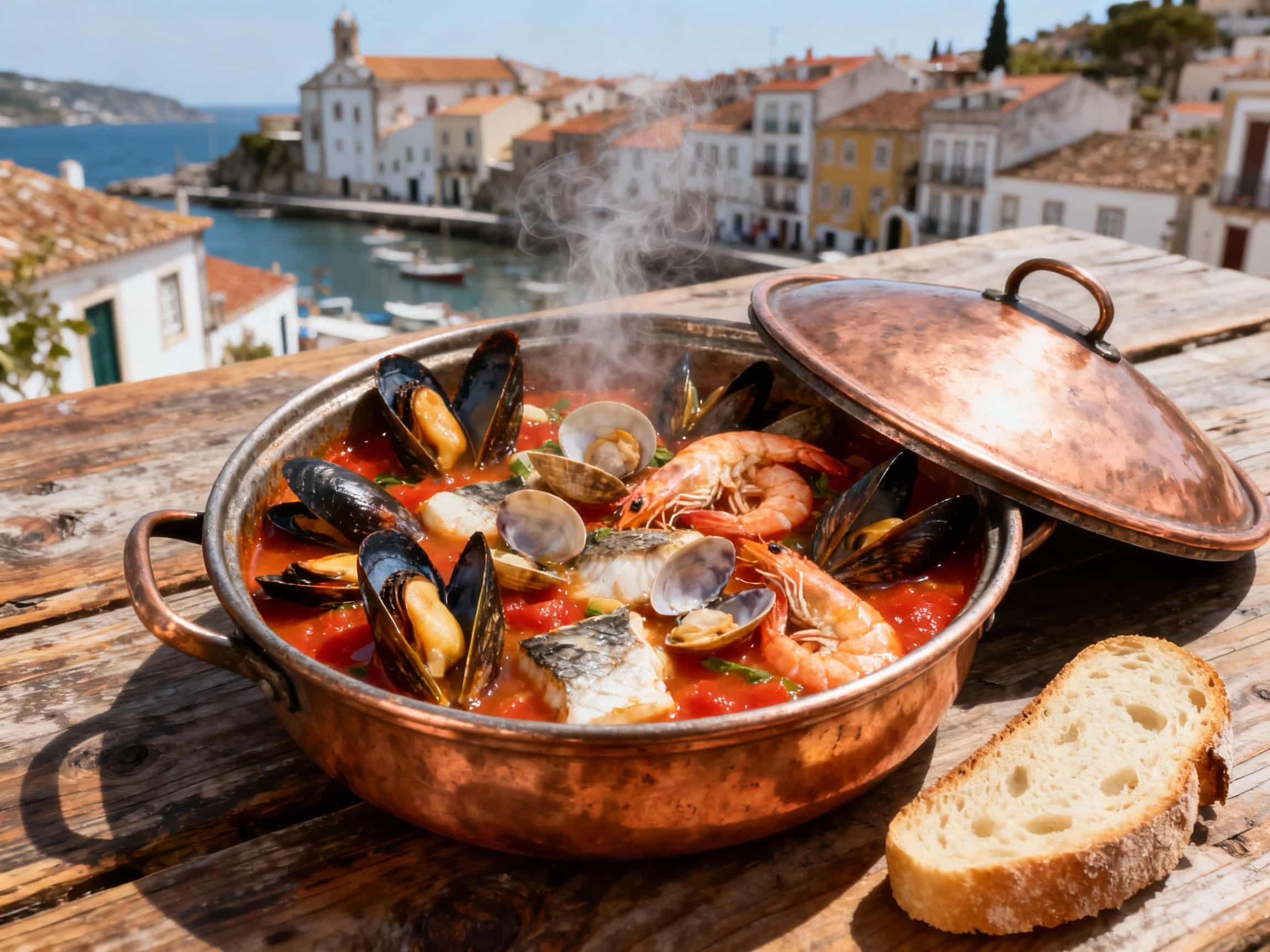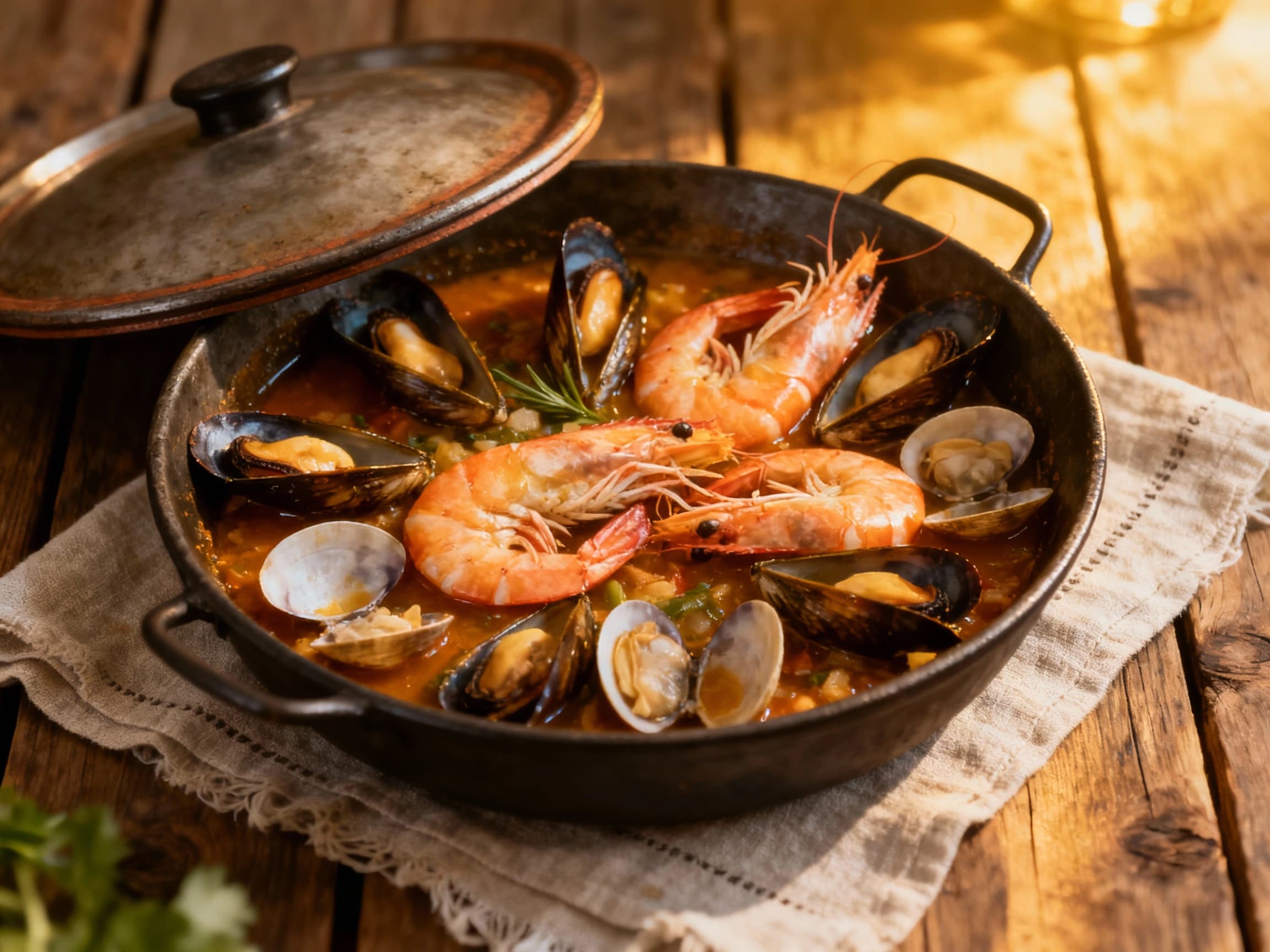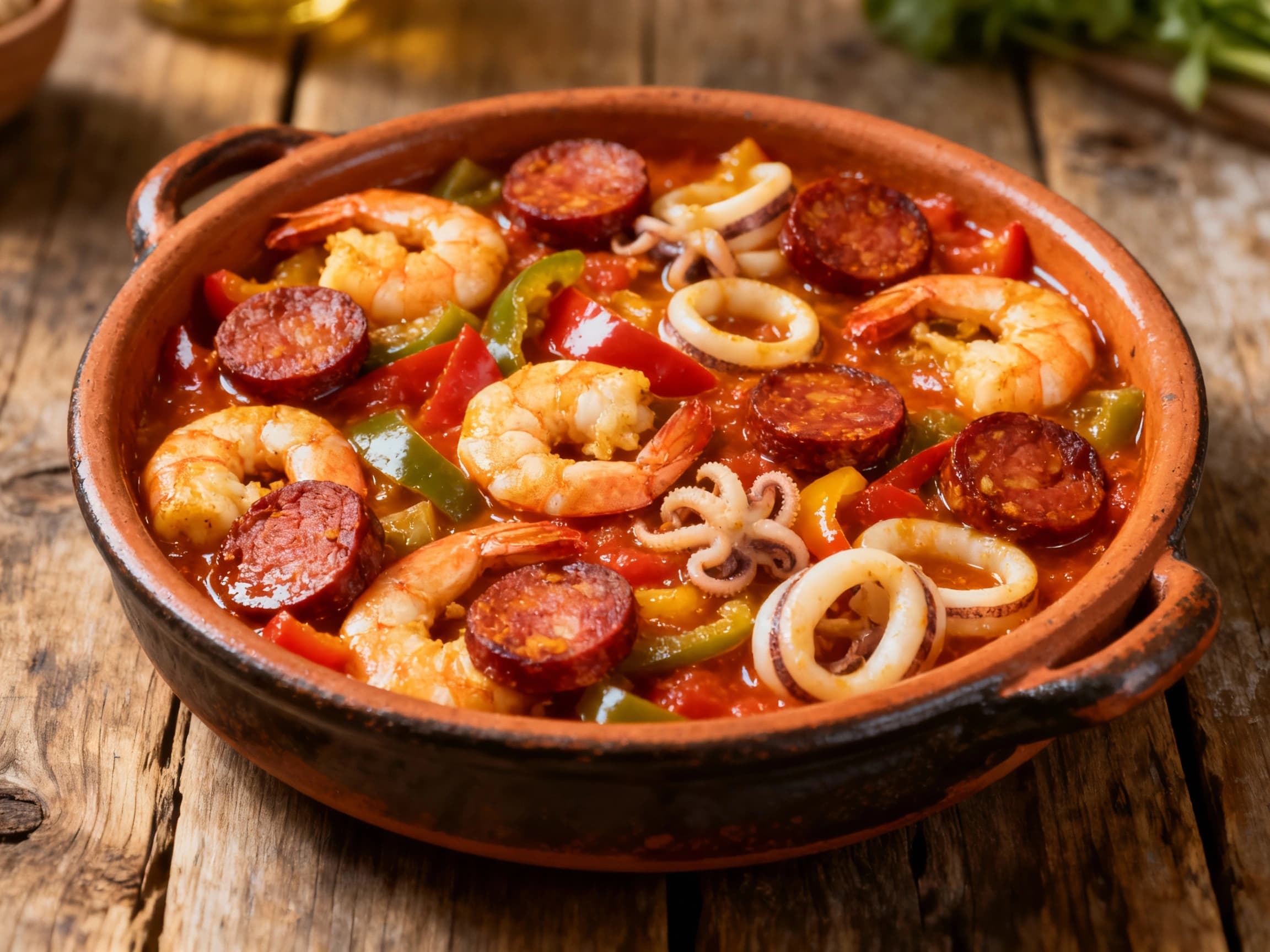
Cataplana de Marisco
Cataplana de Marisco
- Country
- Portugal
- Region
- Algarve
- Recipes
- 2 Recipes
Dish information
The Cataplana de Marisco is a celebrated Portuguese seafood stew, originating from the Algarve region, known for its pristine coastline and rich fishing traditions. This dish is named after the distinctive cataplana cookware, a lidded copper pot resembling two clam shells hinged together. This unique pan allows for a sealed cooking environment, trapping steam and aromas to create a deeply flavorful, tender seafood medley. The origins of the cataplana itself are rooted in Moorish influence, likely brought to Portugal centuries ago, evolving into the modern version used today.Historically, seafood has been a cornerstone of the Portuguese diet, particularly in coastal areas. The cataplana, as a cooking vessel, likely emerged as a practical way to cook fish and shellfish caught by local fishermen, making full use of the ocean's bounty. Its popularity surged in the mid-20th century as Portuguese tourism began to grow, with the Algarve becoming a prime destination. Chefs and home cooks alike embraced the cataplana for its ability to concentrate flavors and present a visually appealing, communal dining experience. It has become a symbol of Algarve's culinary identity, often featured in local festivals and restaurants, celebrated for its freshness and vibrant taste. The interactive nature of serving from the cataplana, typically accompanied by crusty bread to soak up the delicious juices, adds to its cultural significance as a dish meant to be shared and enjoyed with gusto.
Timeline
Copper cookware, similar to the cataplana's design, was likely developed and used by Moorish influences in the Iberian Peninsula.
The Algarve region began to see a significant rise in tourism, popularizing regional dishes like Cataplana de Marisco.
Cataplana de Marisco gained wider recognition as a quintessential Algarve dish, featured in cookbooks and restaurants.
The cataplana pan and its associated dishes became internationally recognized symbols of Portuguese coastal cuisine.

